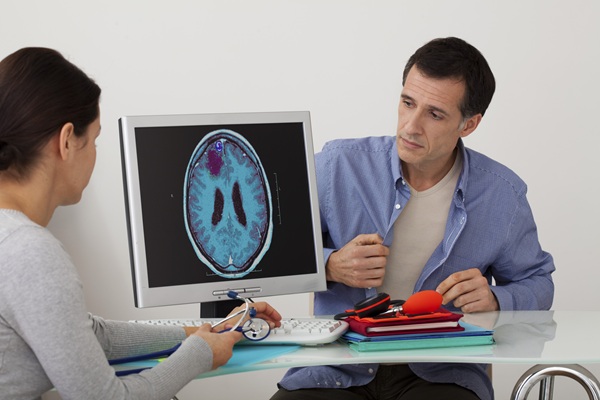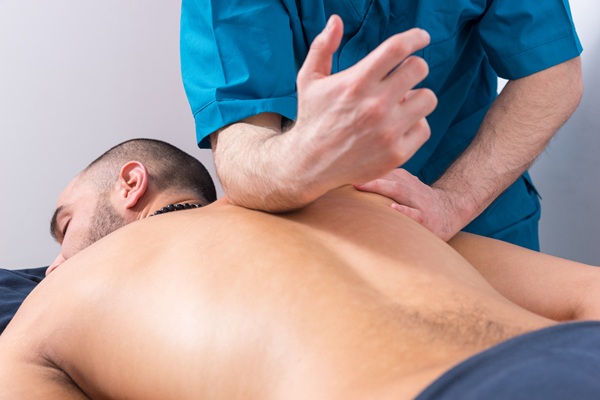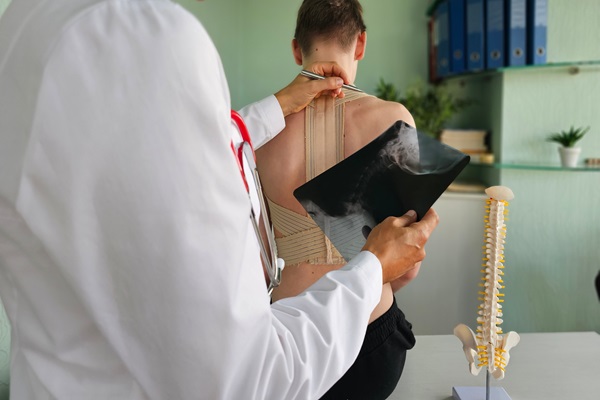Spinal StenosisPhoenix, AZ
Spinal stenosis is a common condition that affects many older Americans. It frequently occurs in the lower back and neck. Spinal stenosis treatment can relieve pain and stop the disorder from worsening.
Spinal stenosis treatment is available at Randall Porter, M.D., in Phoenix and the surrounding area. We can help treat both cervical stenosis and lumbar stenosis. Call us today at 602-603-8951 to schedule an appointment or learn more about our services.
Understanding Spinal Stenosis
Spinal stenosis causes individuals to develop narrowed spaces within the spine, putting undue pressure on the nerves traveling throughout. The condition most frequently affects the lower back and neck. Some affected individuals experience no symptoms at all, while others experience symptoms that worsen over time.
There are two main types of spinal stenosis: cervical stenosis and lumbar stenosis. Cervical stenosis affects the area of the spine in the neck, while lumbar stenosis affects the part of the spine in the lower back. Lumbar stenosis is also more common than cervical stenosis. Spinal stenosis is usually (but not always) caused by normal wear-and-tear changes relating to osteoarthritis.
Signs of Spinal Stenosis
As mentioned earlier, many patients do not experience any symptoms of spinal stenosis. They may not know they have spinal stenosis until they see evidence on an MRI or CT scan. Symptoms may also occur gradually and worsen over time, while also varying on what type of spinal stenosis the patient has.
Patients with cervical stenosis, or spinal stenosis in the neck, may experience the following symptoms:
- Bowel or bladder dysfunction (in severe cases only)
- Balance or walking problems
- Neck pain
- Numbness or tingling in an arm, foot, hand, or leg
- Weakness in an arm, foot, hand, or leg
On the other hand, the following are common symptoms in patients with lumbar spinal stenosis, or spinal stenosis in the lower back:
- Back pain
- Numbness or tingling in a foot or leg
- Pain or cramping in one or both legs when standing for long periods or when walking and that usually eases when bending forward or sitting
- Weakness in a foot or leg
As spinal stenosis affects the nervous system, it is crucial for anyone experiencing these symptoms to see a doctor immediately.
Causes of Spinal Stenosis
According to WebMD, osteoarthritis is the leading cause of spinal stenosis. Arthritis is a condition in which the cartilage breaks down and bone tissue growth slows down. Since it can lead to disc changes, bone spurs, and thicken the spine ligaments, it can put undue pressure on the spinal cord and spinal nerves. Other common causes of spinal stenosis include:
- Herniated discs
- Injuries
- Paget’s disease
- Thickened ligaments
- Tumors
It is also possible to be born with spinal stenosis or other diseases that will lead to it. These people tend to develop problems in the age range of 30 to 50. There are also various risk factors for spinal stenosis, though these tend to vary with age.
Possible Complications of Spinal Stenosis
While spinal stenosis may cause pain, it typically does not cause paralysis. Still, permanent numbness or paralysis is possible if the spinal cord has been compressed for a prolonged period.
As such, it is crucial to address spinal stenosis right away. If left untreated, severe cases of spinal stenosis will only progress. This may also cause permanent balance problems, incontinence, numbness, paralysis, or weakness.
Treating Spinal Stenosis
There are two main types of treatment options for spinal stenosis: first-line treatments and surgery. First-line treatments include pharmaceuticals meant to relieve pain, such as cortisone injections. They may also involve nonsteroidal anti-inflammatory drugs (NSAIDs) or physical therapy.
While surgery is a more permanent solution to pain relief and spinal stenosis treatment, it is typically reserved for patients with more severe pain or for those who have suffered a neurological loss. Several types of surgery can treat spinal stenosis, including laminectomies, foraminotomies, and spinal fusion surgeries. Laminectomies are the most common and involve removing part of the vertebrae to make more room for the nerves.
Call Us Today
Pain from spinal stenosis can interfere with your day-to-day life. We at Randall Porter, M.D., can help. Call us today at 602-603-8951 to schedule an appointment or learn more about our services.
Frequently Asked Questions
What is the long-term outlook for someone with spinal stenosis?
With medical treatment, it is absolutely possible to live a full and satisfying life with spinal stenosis. It is even possible to remain reasonably active. Surgical treatments have a high success rate, and Dr. Porter can discuss how to maintain an active lifestyle after your operation.
Am I at risk of developing spinal stenosis?
Aside from age and osteoarthritis, some populations are more at risk than others. These include those with a history of spine injury, those who have previously had lower back surgery, and those with congenital spine conditions or other spinal problems. Genetic disorders of the limbs, degenerative disc disease, obesity, smoking habits, and poor posture also contribute.
How can I cope with spinal stenosis?
Unfortunately, it is not always possible to prevent spinal stenosis. However, maintaining overall good health will keep your risk profile of developing any diseases and disorders low. Patients with spinal stenosis can help manage their conditions with activity modification and exercise, heated and cold compresses, and overall health maintenance.
What imaging tests are used to diagnose spinal stenosis?
During the diagnosing process, you will have to undergo various imaging tests to determine the extent, type, and location. These will include X-rays, MRIs, and CT or CT myelogram scans. These tests will allow us to determine the best treatment method for you.
What should I tell the doctor about my spinal stenosis problems?
It is always better to be prepared when meeting with a medical professional. If you can, prepare talking points ahead of time to give the doctor as much information as possible. Let them know when you first noticed your symptoms, whether they have worsened with time, and whether anyone in your family has experienced similar issues. You should also note if you have any preexisting conditions, take any medications or supplements, and if you have had any spinal surgeries or injections before.





